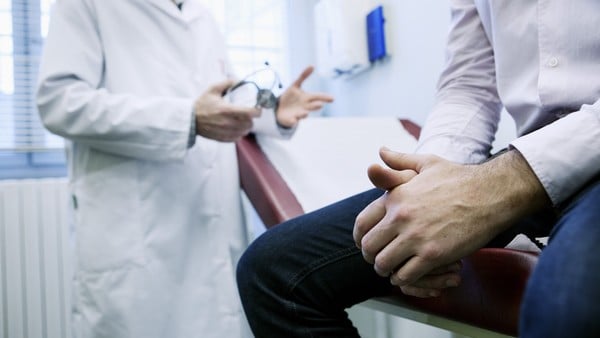Global Courant 2023-04-18 13:01:21
“Sir, you have prostate cancer, but we are not going to treat it”
The phrase, which is being heard by more and more men around the world, can be difficult for patients to swallow. It still generates some resistance in some sectors of the medical community.
However, it is the approach to follow in many cases of tumors classified as low risk that, according to clinical practice guidelines, should be actively controlled and not treated, unless signs of progression are observed.
An article published in the magazine JAMA Internal Medicine gave an account of the progress of this paradigm shift in the United States.
The number of prostate cancer patients in that country who received active surveillance instead of surgery or radiotherapy increased rapidly in the last decade: it went from 16% in 2010 to 60% in 2018 for low-risk patients and from 8% to 22% in those with favorable intermediate risk tumors.
“Our findings suggest that patients and clinicians are becoming more comfortable watching a subset of cancers with low-risk features, extending the benefits of surveillance to more men,” said the paper’s lead author, Bashir Al Hussein Al Awamlh, from the area of Urological Oncology at the Vanderbilt University Medical Center (VUMC).
“However -he admitted-, there is room to improve the acceptance of active surveillance to achieve rates similar to those in some countries in Europe or Australia. Particularly in light of recent data demonstrating the safety of active surveillance in low-risk cancers. risk.”
“We would like to see the rising tide of active surveillance lift all the boats,” said co-author Daniel Barocas, executive vice president of Urology at VUMC, in the same vein.
In Argentina, according to specialists consulted by Clarín, active surveillance in prostate cancer is also on the rise, but still at a slow pace.
Active surveillance is indicated in low-risk tumors. Photo Shutterstock.
Prostate cancer: what is active surveillance
Active surveillance includes active monitoring of prostate cancer to assess its progression and intervene with treatment (surgery, radiation, drugs) only if the cancer progresses.
Surveillance is thought to mitigate the adverse effects associated with treating these cancers while still being oncologically safe, according to Jonathan Shoag, an associate professor of urology at University Hospitals (UH) Seidman Cancer Center in Cleveland, a co-author on the paper. .
“These data show that a diagnosis of prostate cancer no longer means that the patient will undergo treatment,” he stressed.
He added: “This further strengthens what are already compelling arguments that the benefits of prostate cancer screening with PSA far outweigh the harm. We can now, and do, avoid treating cancers that we believe will behave in an indolent manner.”
Along the same lines, Gonzalo Vitagliano, head of Uro-Oncology at the Urology service at the German Hospital in Buenos Aires, told Clarín that until a few years ago, a patient who was diagnosed was a patient who was treated.
“This is not the case today. We do early detection and what we aim for is to identify patients with clinically insignificant disease (who are not going to die from that disease) and to diagnose patients with clinically significant disease.”
Prostate cancer is the most frequent in men: it produces about 11,000 new cases per year in Argentina and causes more than 3,700 deaths.
The importance of detecting it early is that, if necessary, treatment can prevent or delay its progression; while there are cases in which only follow-up should be indicated.
“There is a very large number of men who have very early-stage disease, who are only followed up,” said Vitagliano, who created the Latin American Prostate Cancer Follow-up Consortium with the aim of providing regional evidence on this patient group.
The PSA antigen is a specific marker of the prostate. Photo Shutterstock.
Prostate cancer: who are candidates for active surveillance
The results of the biopsy, in addition to other characteristics taken into account by the treating professional, allow us to classify prostate cancer into low-risk tumors, intermediate risk (which is subdivided into favorable and unfavorable), high risk, and very high risk.
“Active surveillance has been the strategy of choice in many low-risk cases for many years. Urological and oncological guidelines say so. It is absolutely proven. It is not a reason for controversy or discussion,” Juan Pablo Sade, head of the hospital, told Clarín. Genitourinary Tumors area at the Alexander Fleming Institute (IAF) and at the Austral University Hospital.
A piece of information: most prostate tumors are low risk (it is estimated that between 50% and 60%). “Which means that many patients are candidates for active surveillance,” she stressed.
It is also an option, “discussing case by case”, in favorable intervals. However, there is no unanimity about the relevance of its indication in this group of patients, to the point that the issue was debated at the most important congress of genitourinary oncology (ASCO GU), held in February in San Francisco, United States. Joined.
“International experts suggested that active surveillance could be extended to favorable intermediates. It is more controversial, there are professionals for and against, but it is not bad to discuss it with patients,” Sade considered.
Active surveillance is, in fact, a marker of quality. “If you offer active surveillance in your urology or oncology service, it means that you are doing things right. It means that you are proceeding in accordance with international guidelines,” she said.
In Argentina, although it is practiced more than a few years ago, it is still mostly limited to reference centers.
“Active surveillance in Argentina is very center-dependent – Vitagliano pointed out -. In academic and reference centers it is well disseminated, well accepted, well controlled. degree and even radiotherapy and surgery are indicated.”
“To do active surveillance you need a good pathologist, a good imaging specialist, a good urologist and/or oncologist (urologists generally do it) and above all you need a multidisciplinary discussion, a tumor committee,” Sade listed. These conditions are usually met by academic and high-level centers.
“Little by little, it is moving from these academic, multidisciplinary centers, to what we call the community. In the community, where the doctor is alone, does not have as much experience, does not discuss patients with other colleagues, everything is more difficult”, matched.
It is that, despite being a validated strategy and with evidence of proven effectiveness and safety in patients with low-risk tumors, there are certain factors that hinder its expansion to a large number of patients who should be referred to active surveillance and that, however, they are treated.
“It is difficult for it to be implemented in daily practice, due to resistance from specialists, due to interests, due to biases, due to the restlessness of patients, due to not understanding the concept, for various reasons,” Sade listed.
“There are a lot of biases from the people involved (oncologists, urologists, patients) that sometimes make it difficult to implement this type of behavior, where you are telling a person ‘you sir have cancer, but we are not going to treat it ‘ It is difficult for it to enter the patient’s head, it is difficult for it to enter the head of the urologist and the oncologist, because we are trained to treat, not not to do it, “he admitted.
Prostate cancer: how a patient is controlled in active surveillance
Patients who are referred to active surveillance must be monitored with some frequency.
Although there are minimum and maximum schemes, specialists agree that blood tests to measure prostate antigen (PSA) between two and three times a year, added to multiparametric resonance of the prostate (in centers that have access to , as a complementary measure to rectal examination) and confirmatory biopsy (at the doctor’s discretion) are the studies that make it possible to determine if the tumor remains stable or progresses and requires treatment.
During surveillance, Sade commented, “the patient is actively followed and tried to be influenced to make behavior modifications that not only result in better prostate health, but in better overall health, such as regular physical activity, lowering weight and have more muscle mass and less body fat, and increase the intake of tomato, broccoli, pomegranate, turmeric, green tea, as part of a healthy diet.
Does active surveillance have risks?
According to Sade, the main risks are indicating active surveillance to a patient misclassified as low risk (when in reality it is not) or poor follow-up and not knowing when to remove him from active surveillance and transfer him to treatment.
However, it stands out that the main risk in this scenario is over-treatment and not under-treatment. “In general, when in doubt, it’s about more. Patients are sent to surgery to remove their prostate or are given X-rays, when many times they don’t need it,” he said.
In this sense, he suggests that patients, to the extent possible, seek care from urologists (or oncologists) trained in prostate cancer, that they present the different options (“there is always more than one”) and that they integrate multidisciplinary teams.
“It is the doctor’s responsibility to ask the patient the pros and cons of each option. You have to provide information and then advise. Not simply say ‘you have to do this.’ You inform and then the patient decides, but in the Latino population, unlike the Anglo-Saxon, in 99.9% of cases they ask us ‘doctor, what would you do?'”
“We are moving towards a greater number of men with prostate cancer at risk who go to active surveillance. Slowly, but we are on the right track,” concluded Sade, who is also a member of the Argentine Association of Clinical Oncology.
***
➪ Do you have any questions about health and well-being that you would like us to address in section notes? Enter the Clarín Help Center by clicking here, enter Message to the newsroom and then Questions to Buena Vida. Write us your query and send. Done!








